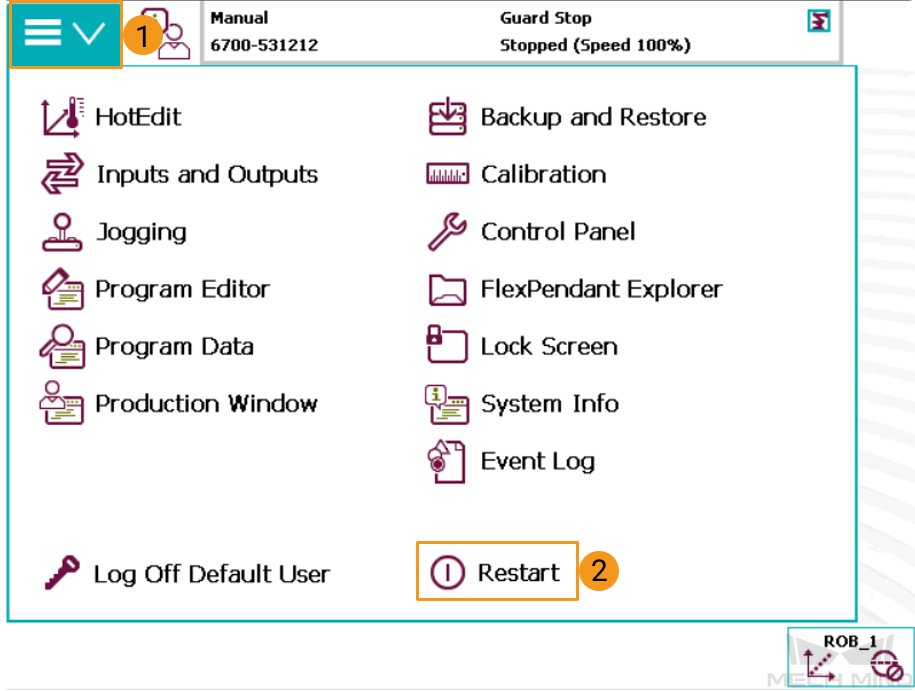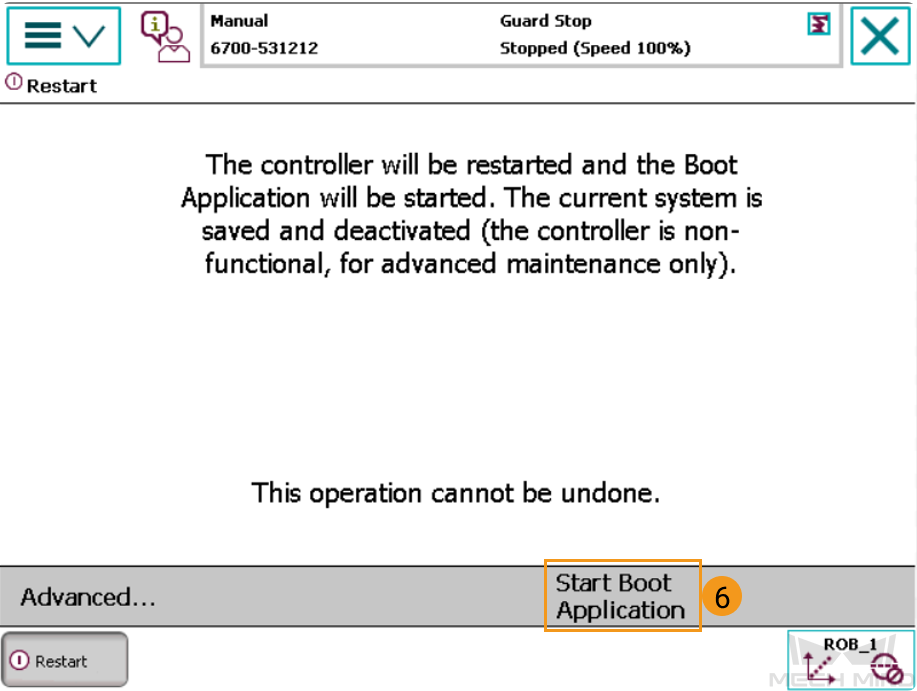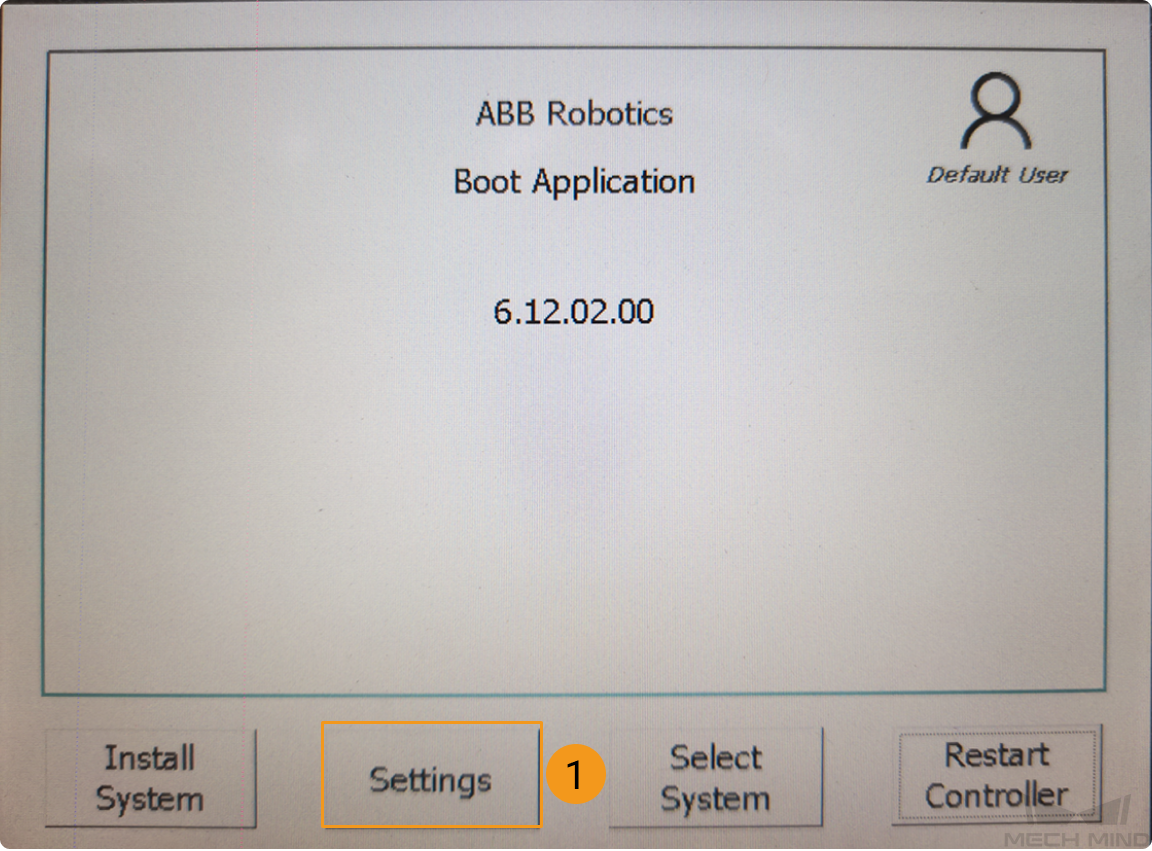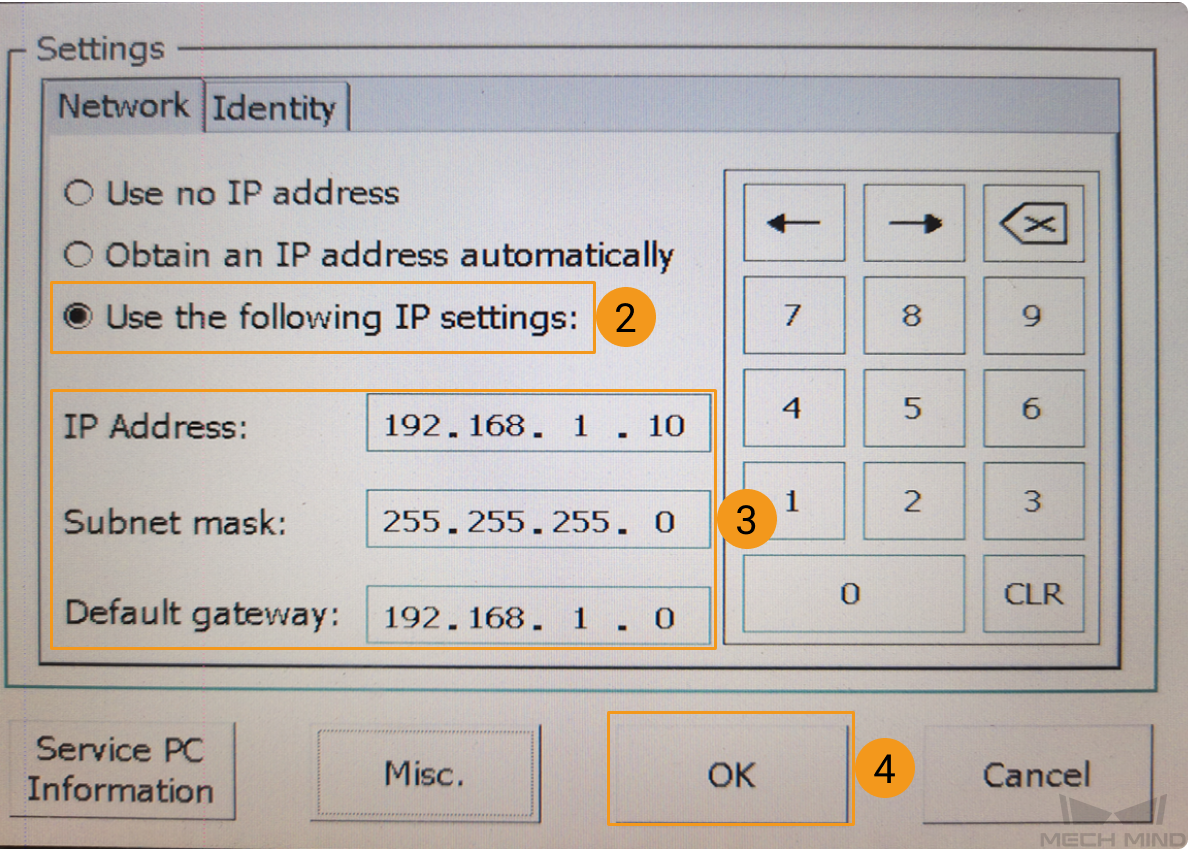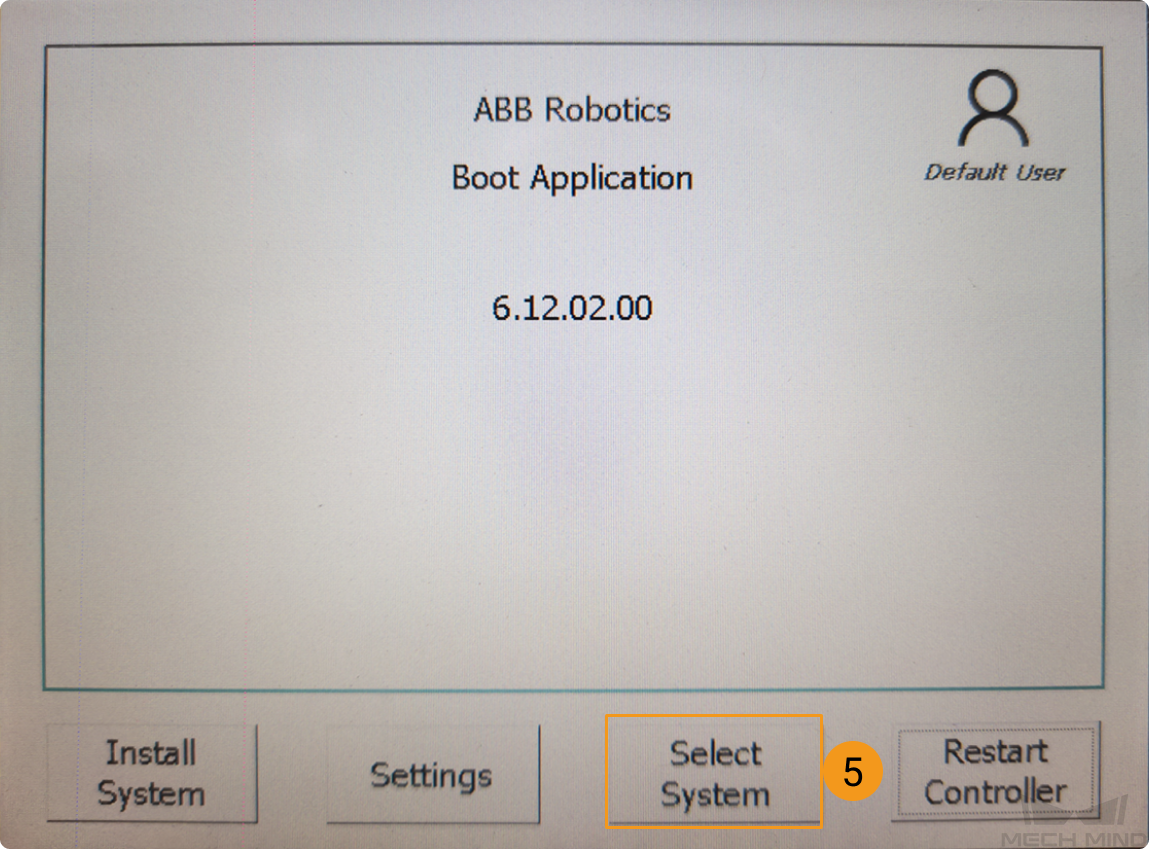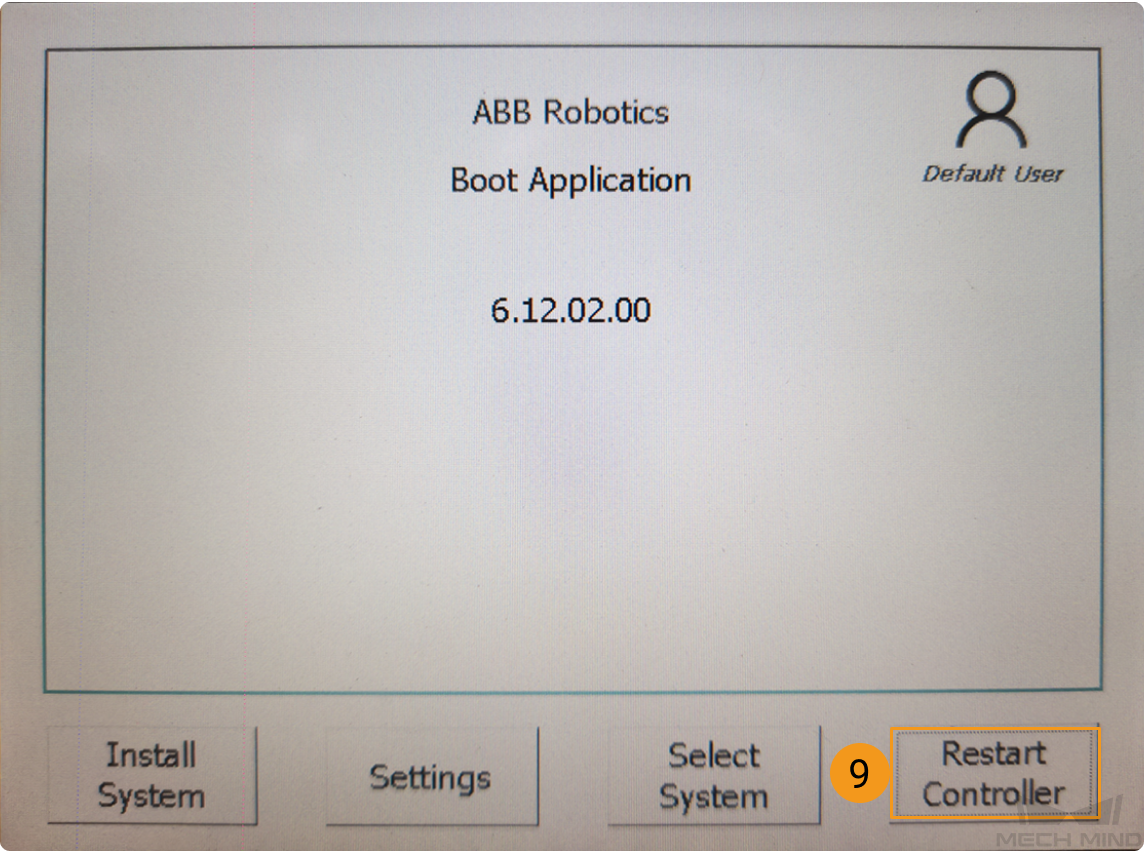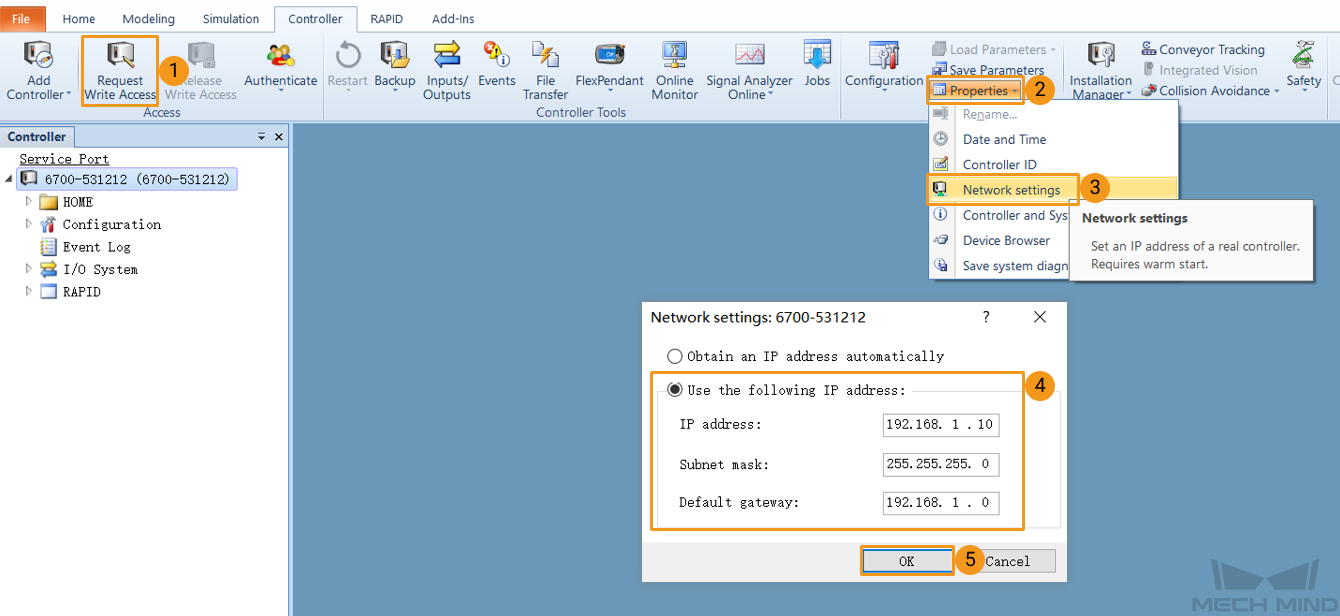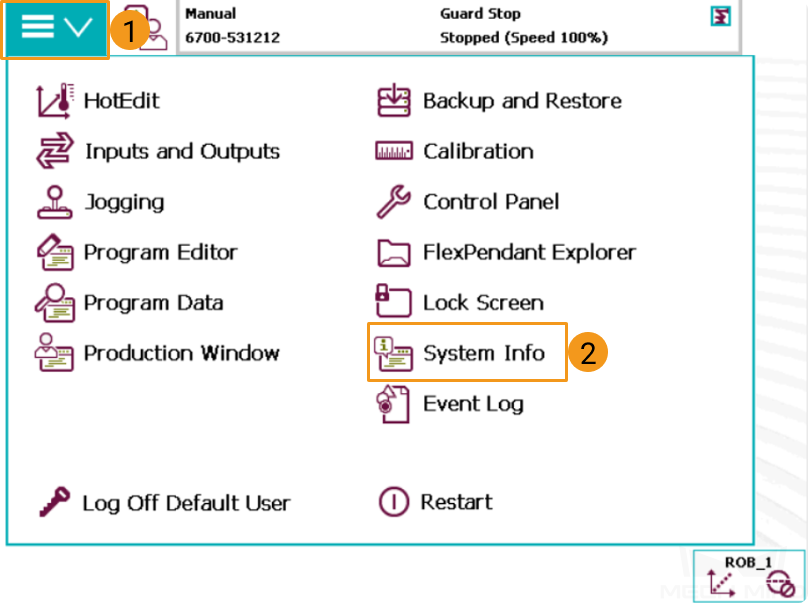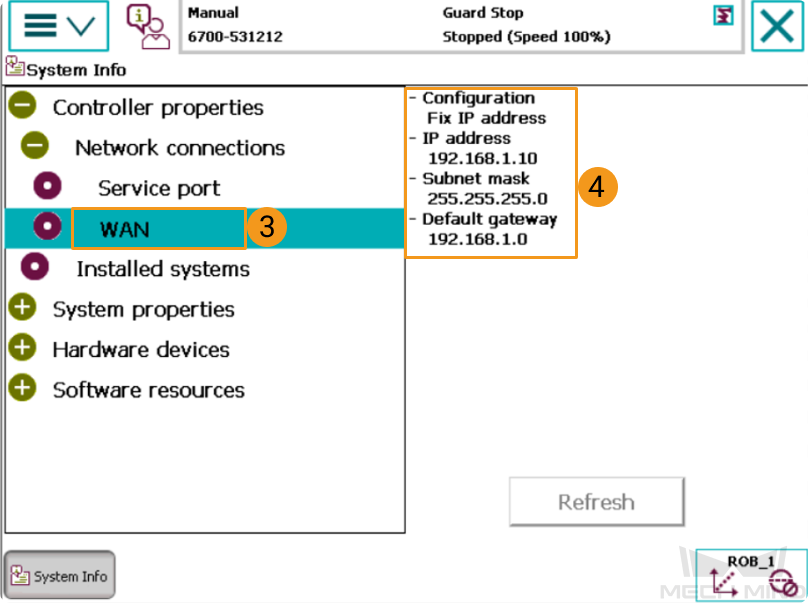Master-Control Communication Setup (RobotWare 6)
This guide shows you how to set up Master-Control communication with an ABB robot.
Preparation
Check Controller and Software Compatibility
-
The robot controller is IRC4 or IRC5, and the RobotWare version is between 6.02 and 6.15 inclusive.
Follow the steps below to check the RobotWare version.
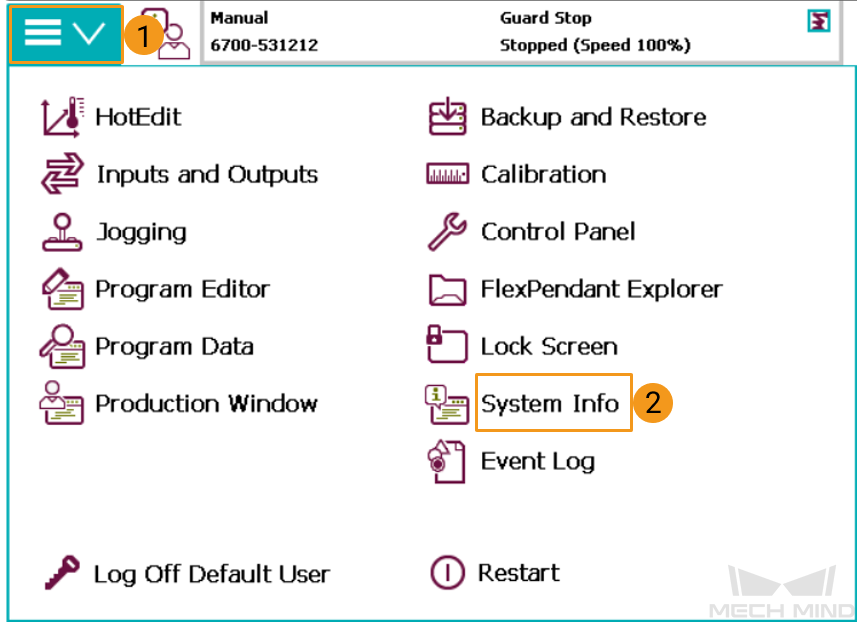
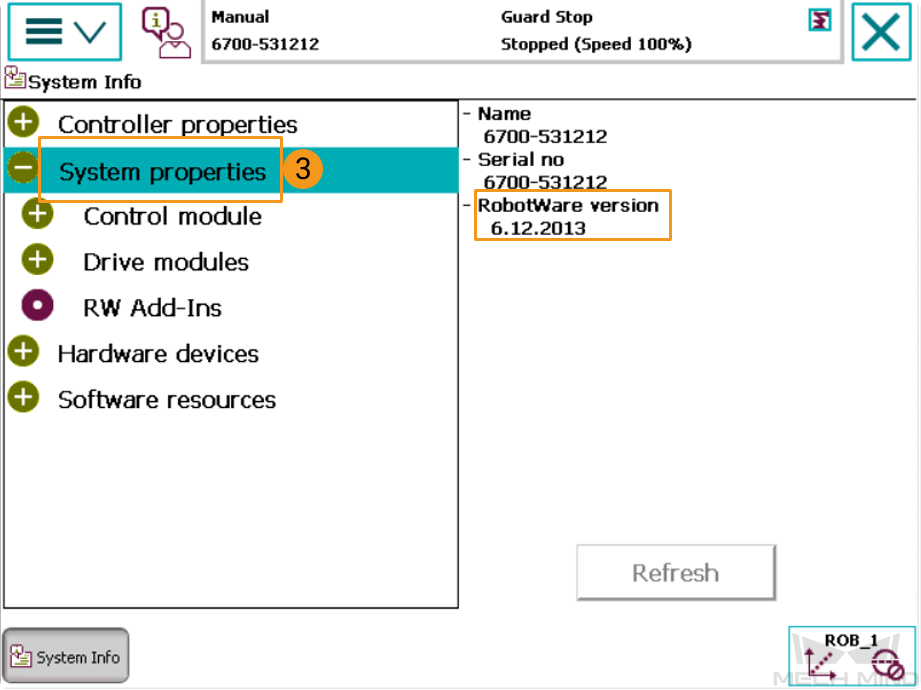
-
The following control module options should be installed:
-
623-1 Multitasking
-
616-1 PCInterface
Follow the steps below to check whether the control module options are installed.
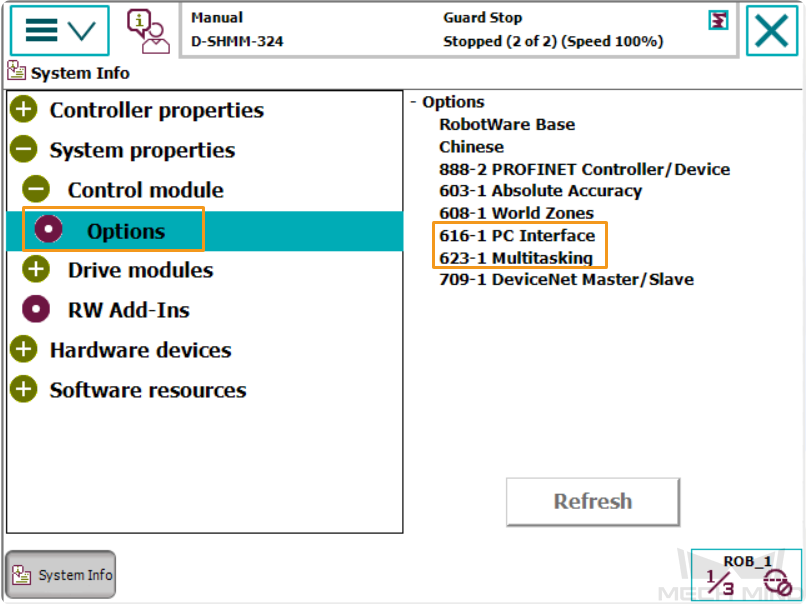
To master-control an ABB robot, you must install the above control module options. -
Set up the Network Connection
Connect the Hardware
Plug the Ethernet cable of the IPC into the X6 (WAN) port of the robot controller, as shown below.

Set the IP Address
You can set the IP address on the teach pendant or in RobotStudio.
Load the Program Files to the Robot (Auto)
After you set parameters in the Robot Program Loader tool, the tool auto-loads files to the ABB robot. Follow the steps below to allow the tool to auto-load files.
| If the auto-load process fails and you cannot resolve the issue, proceed to Load the Program Files to the Robot (Manual). |
-
Switch the key in the controller to the automatic mode, and ensure that the motor indicator light is on.
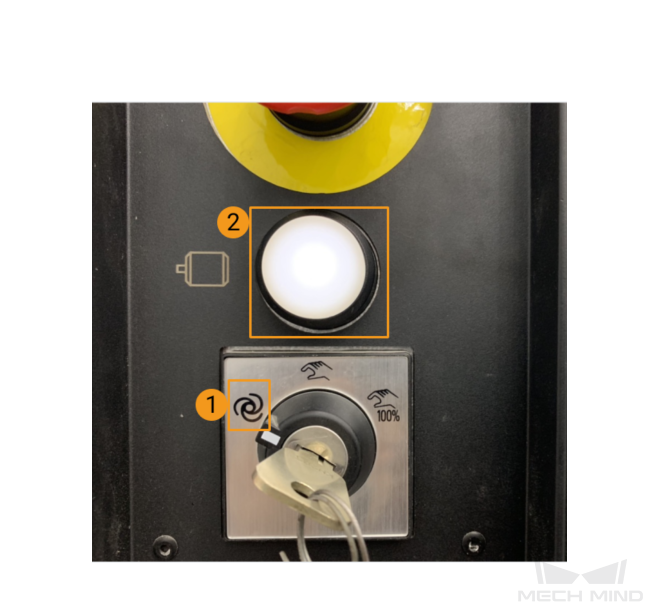
-
Navigate to the installation directory of Mech-Vision and Mech-Viz, go to the Robot Program Loader folder by using the Communication Component\tool\Robot Program Loader path, and then double-click the Robot Program Loader program to open the loader. The main interface of the loader appears.


-
Select the ABB robot brand, enter the actual robot IP address, and then click Connect.
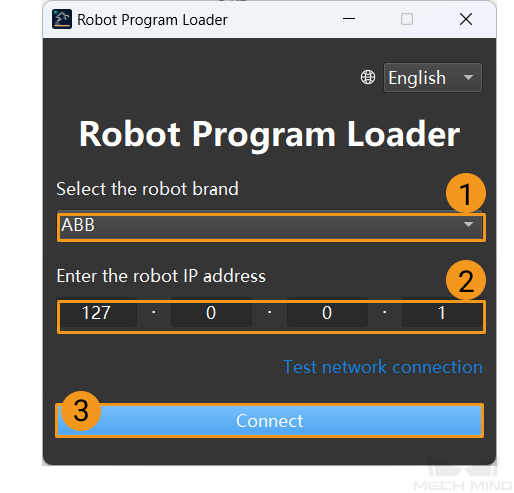
If the connection fails, click Test network connection in the lower-right corner to troubleshoot the issue. -
In the ABB Program Loading interface, select a folder to store the backup files and then click Back up. If the files are backed up, a message that indicates the backup is successful is displayed in the Log section.
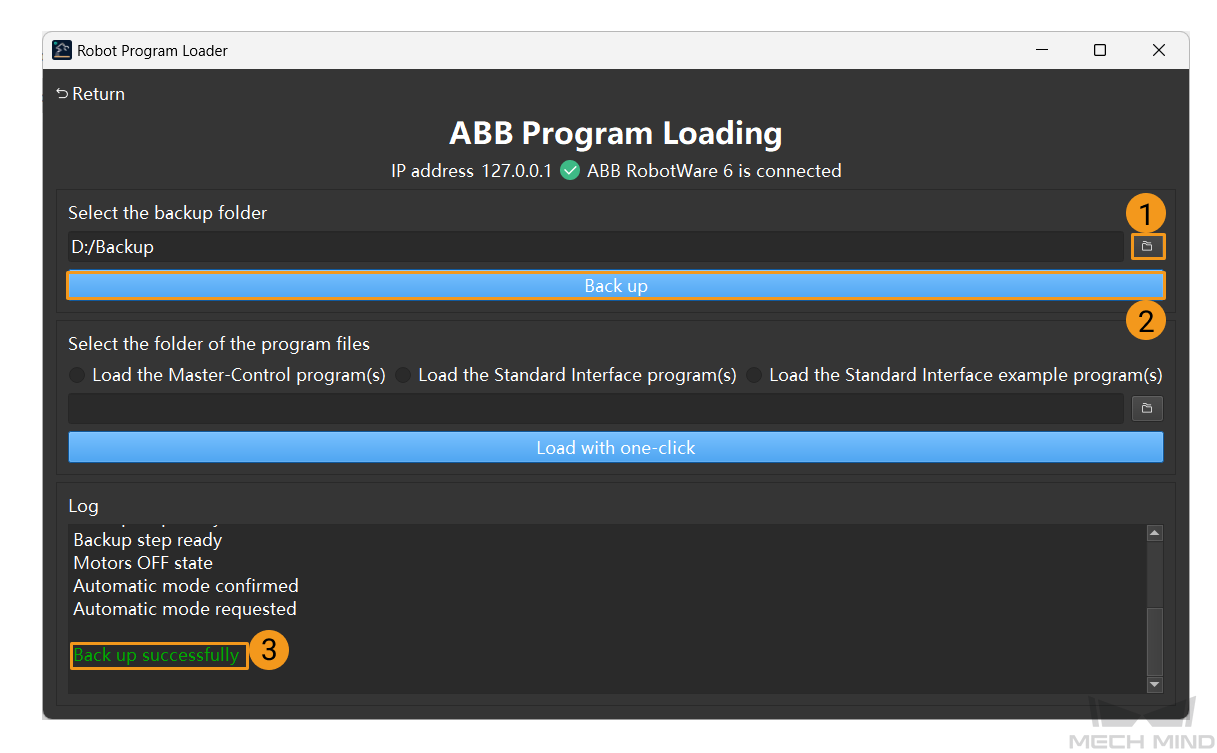
-
After the backup succeeds, select Load the Master-Control program(s) to confirm the folder that stores the program files and then select the IO card type of the robot. In this example, No IO card is selected. Your card type may be different from the card type that is used in this example. Set the card type based on your actual scenarios. After you set the preceding parameters, click Load with one-click. If a message that indicates the program files are successfully loaded appears in the Log section, the files are loaded to the robot.

If the auto-load process succeeds, the controller restarts. After the auto-load process succeeds, proceed to Configure I/O System.
Load the Program Files to the Robot (Manual)
If the auto-load process succeeds, skip this section.
Prepare the Files
Backup
Before you operate the robot, follow the backup instructions below to back up the system so that the robot system can be restored if an incorrect operation occurs. You can backup the robot system by using the teach pendant or RobotStudio.
-
Backup on the Teach Pendant
-
Go to the home page by using the menu in the upper-left corner, and then select Backup and Restore.
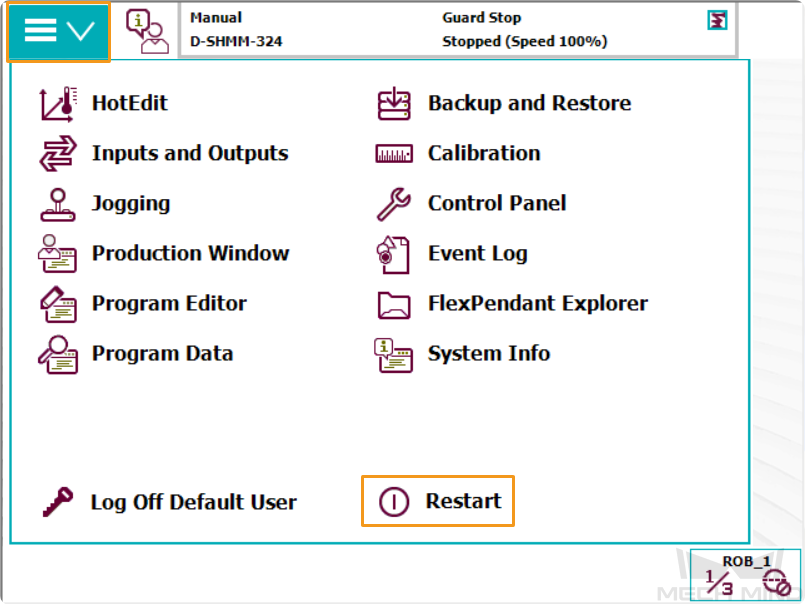
-
Select Backup Current System….
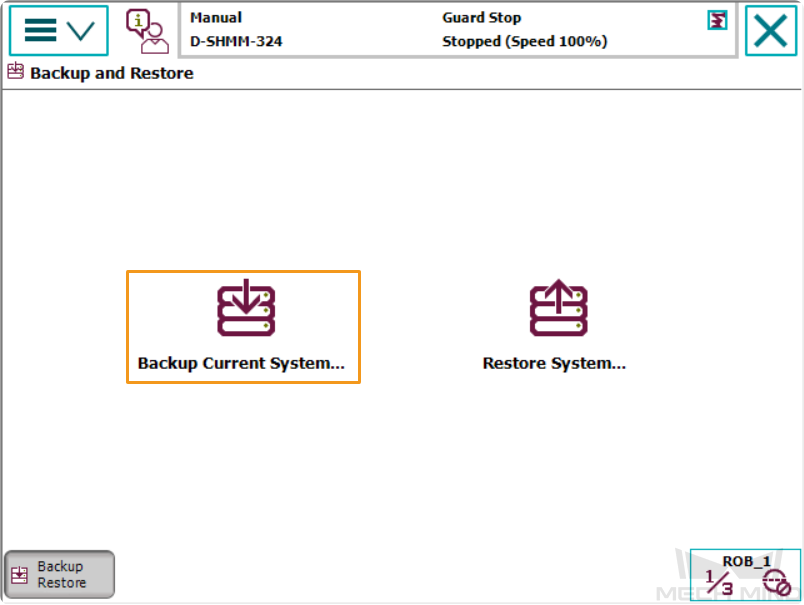
-
Specify the backup file name by pressing on ABC…, specify the directory for saving the file by pressing the button below, and then press Backup in the lower-right to start the backup process.
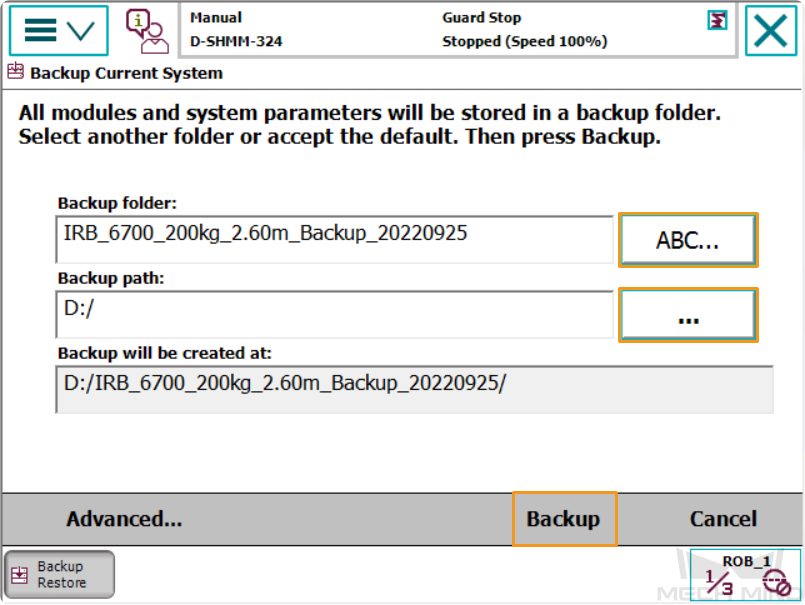
-
-
Backup in RobotStudio
-
In the main interface of RobotStudio, select the controller you want to backup, and then select .
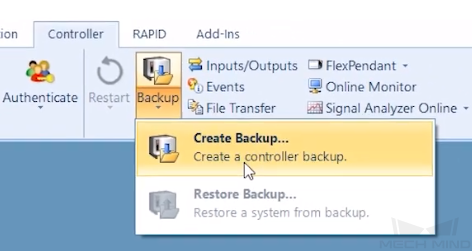
-
In the pop-up window, confirm the backup name and location and then click OK.
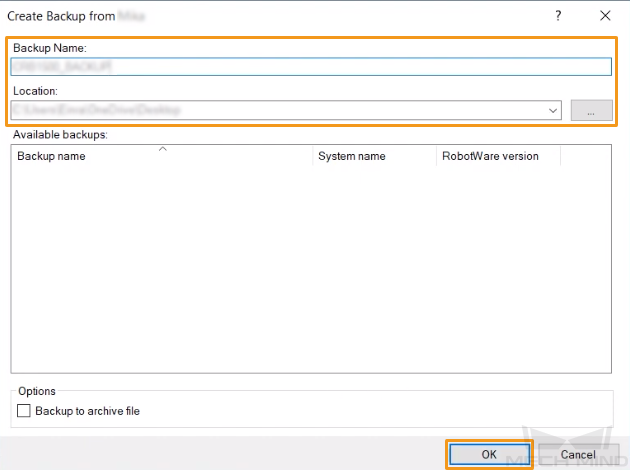
-
Resetting
|
Two types of resetting exist: resetting RAPID and resetting the system.
|
Reset RAPID
Determine whether you need to reset RAPID based on the following flowchart.

-
Go to the home page by using the menu in the upper-left corner, and then select Restart.
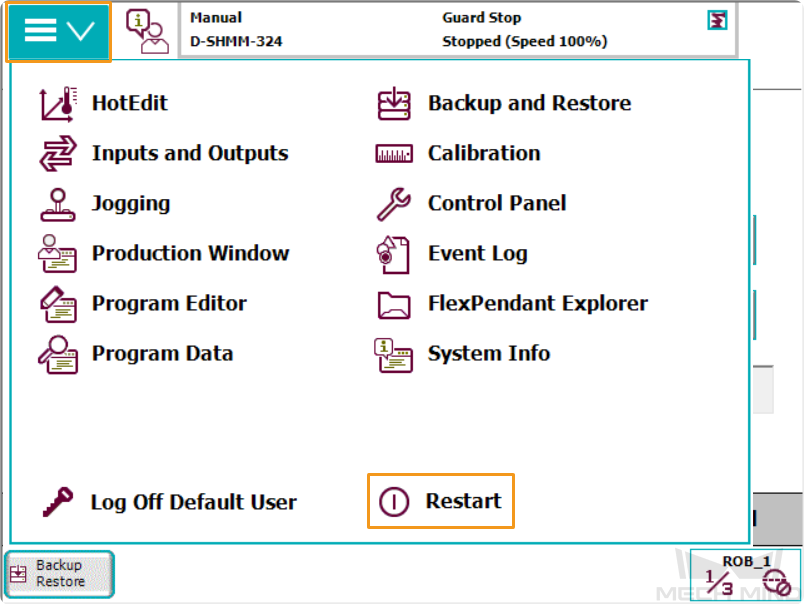
-
Select Advanced… in the lower-left.
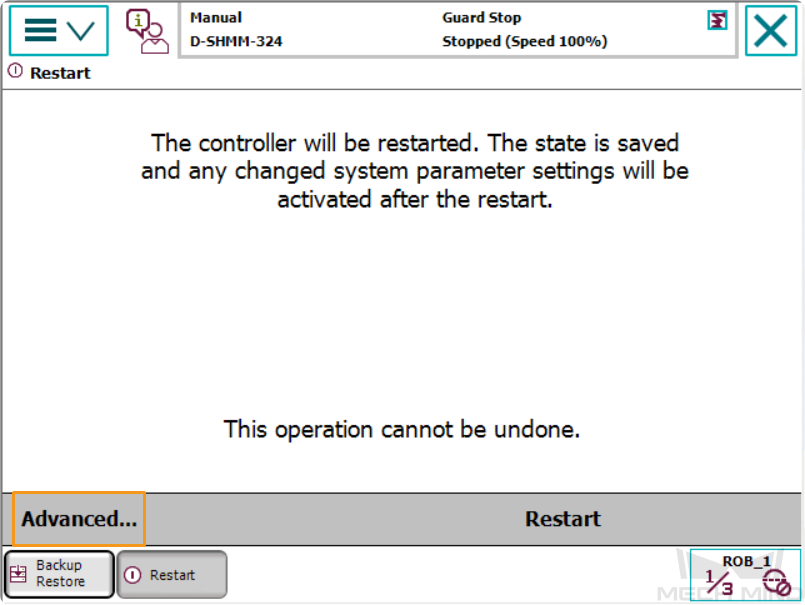
-
Select Reset RAPID, and then press Next in the lower-right.
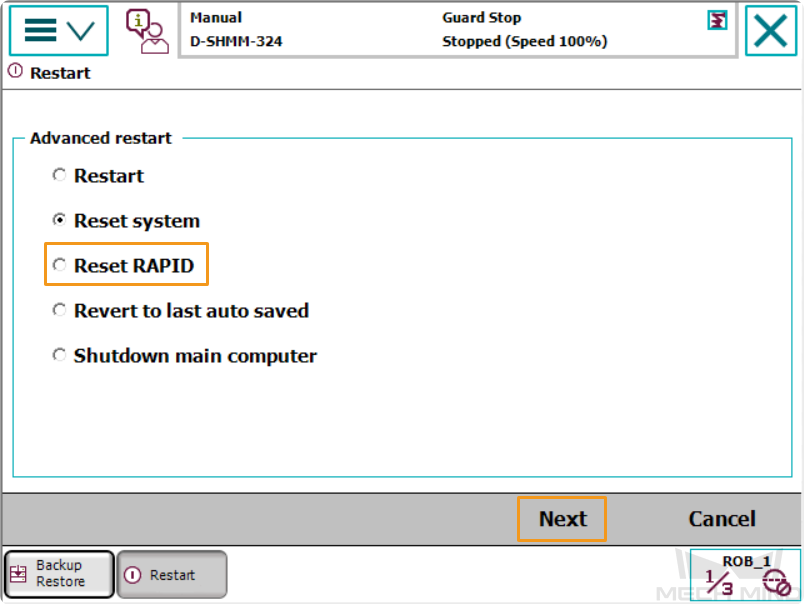
-
Press Reset RAPID.
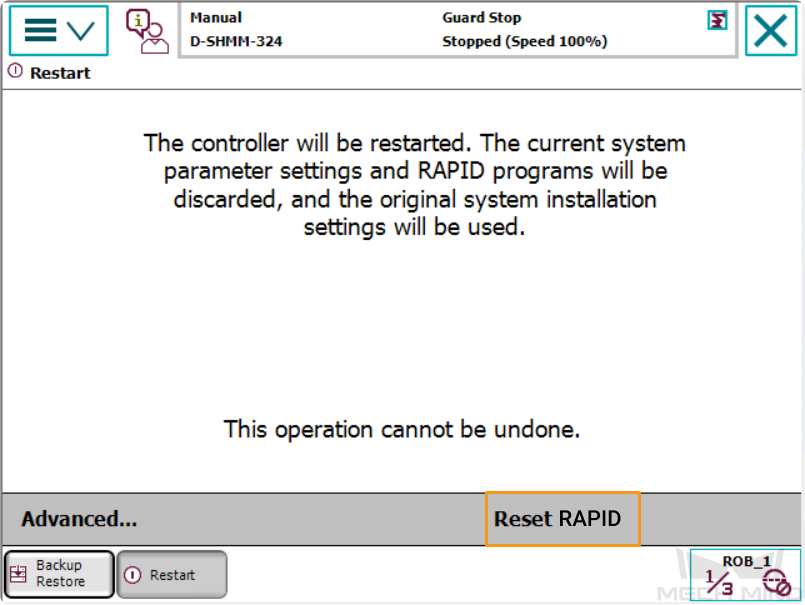
Reset System
| Resetting the system restores factory settings. Make sure that the backup operation is performed. |
-
Go to the home page by using the menu in the upper-left corner, and then select Restart.

-
Select Advanced… in the lower-left.

-
Select Reset system, and then press Next in the lower-right.

-
Press Reset system.

Obtain the Program Files
Copy the program files into a USB flash drive. Please locate the folder where Mech-Vision and Mech-Viz are installed, and the files are stored in Communication Component/Robot_Server/Robot_FullControl/abb/RobotWare 6.
-
The config files in the
RobotWare 6folder should be compatible with the I/O Unit in use. Choose the right config files from the config folders based on the actual scenario.-
If a DSQC 652 I/O unit is used, select D652.cfg and SYS.cfg.
-
If a DSQC 1030 I/O unit is used, select DSQC1030.cfg and SYS.cfg.
-
If other I/O unit is used or the program is only used for automatic calibration, select EIO.cfg and SYS.cfg.
-
-
In the
RobotWare 6folder, files in the MM folder are robot program modules.
Load the Files to the Robot
-
Open RobotStudio on the IPC and connect to the controller.
-
If the robot controller is connected by using the LAN port, click One Click Connect….
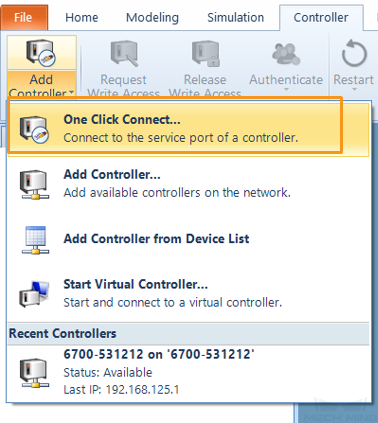
-
If the robot controller is connected by the WAN port or a switch, click Add Controller and then select the controller and click OK. If the controller is added successfully, RobotStudio will be connected to the service port of the controller automatically.

-
-
Request write access.
Click Request Write Access to request the write access to the teach pendant.

Press Grant in the Request Write Access window on the teach pendant.
-
Import the config files as shown below. Select Confirm in the pop-up windows.
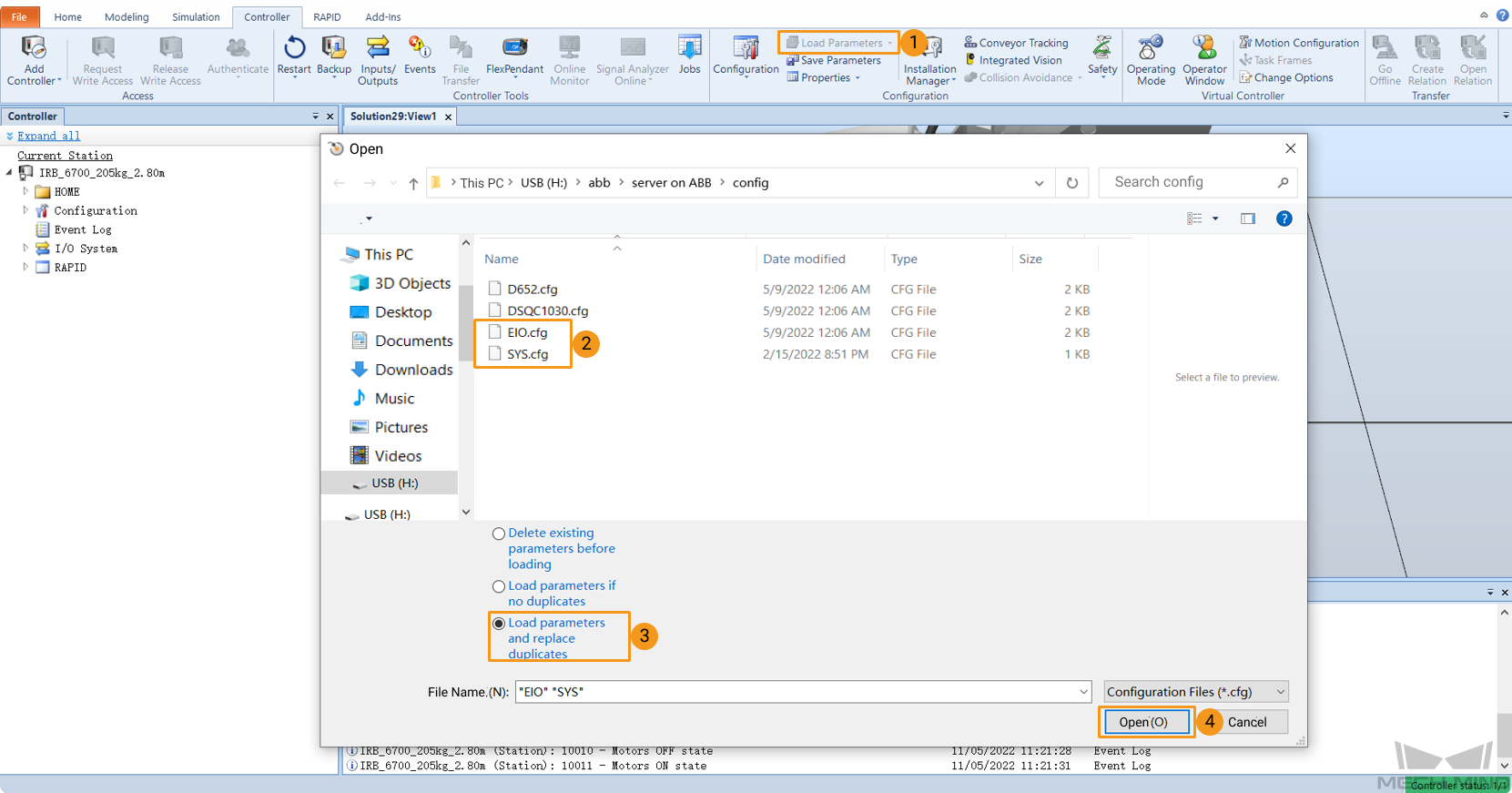
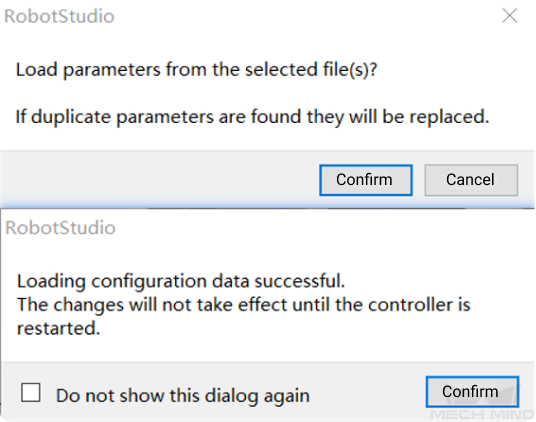
-
Follow the steps as shown in the figure below to copy the MM folder in the
RobotWare 6folder and paste it to the HOME directory of the robot system.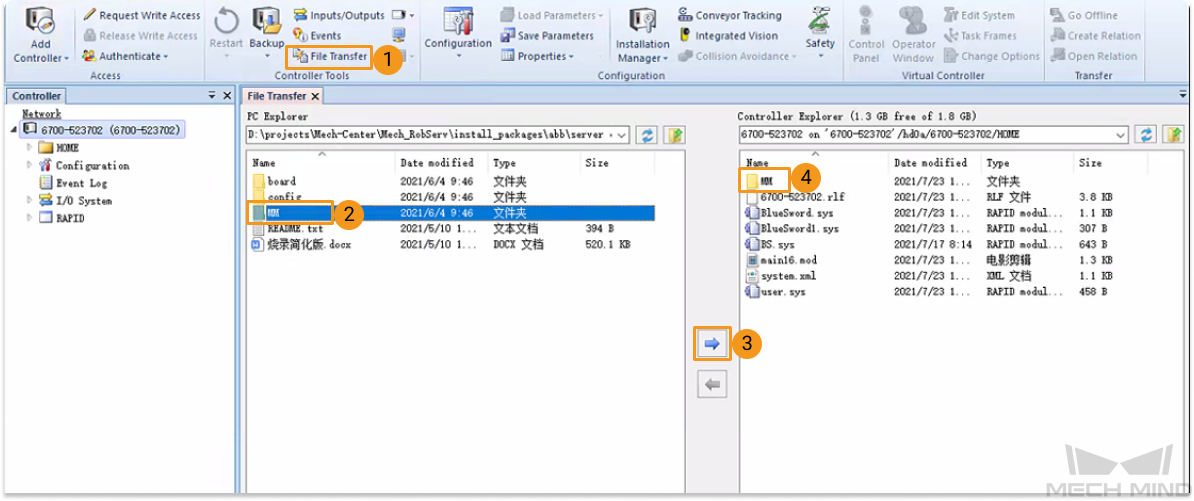
-
Modify the safe zone threshold (in mm) in the safe_area.mod program based on the actual on-site work space of the robot.

Configure I/O System
If an I/O unit other than DSQC 652 or DSQC 1030 is used, you should configure the robot I/O system after loading the program. Please follow the steps below to proceed:
-
In the main interface of RobotStudio, select .
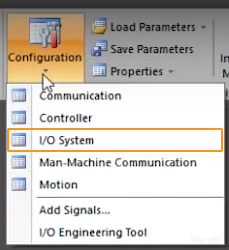
-
Locate and select Signal in the Type column, locate gi16 and go16 in the Name column on the right, and then double-select to enter the edit window.
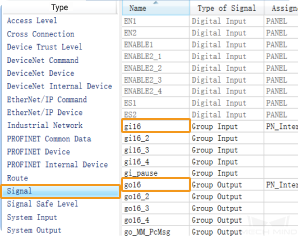
-
After confirming the corresponding devices and device mapping, modify the values of Assigned to Device and Device Mapping for gi16 and go16 respectively.
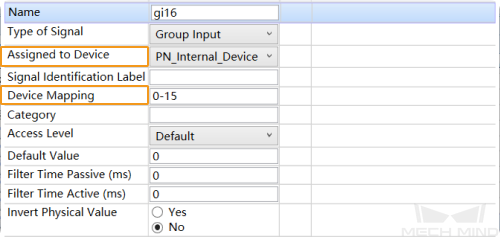
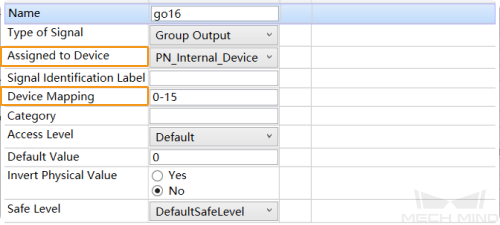
-
After the configuration, select OK. Then, restart the controller to make the changes take effect.
Test Master-Control Communication
Run the Program
-
Turn the switch on the controller to the automatic mode, select the automatic mode in the teach pendant interface, and then press the motor power button. Make sure that the motor indicator light is on.

-
Move the PP of tasks T_ROB1 and safe_area to Main respectively. After selecting PP to Main, if a window as shown below pops up, please tap Yes to confirm.

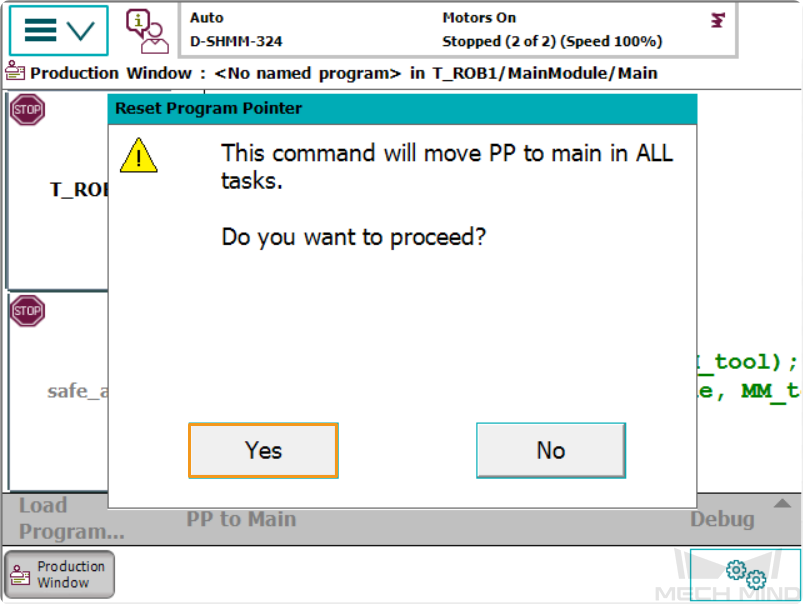
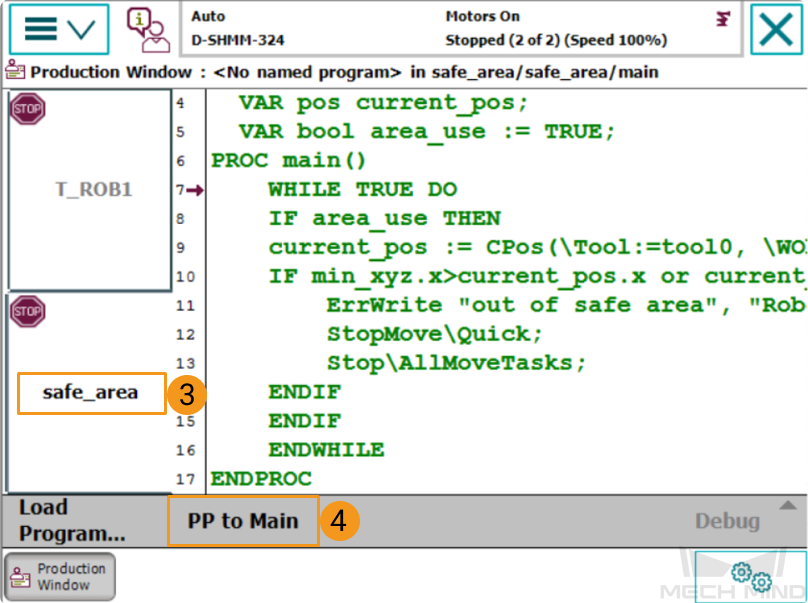
-
Follow the steps in the image to modify the velocity to 25%.
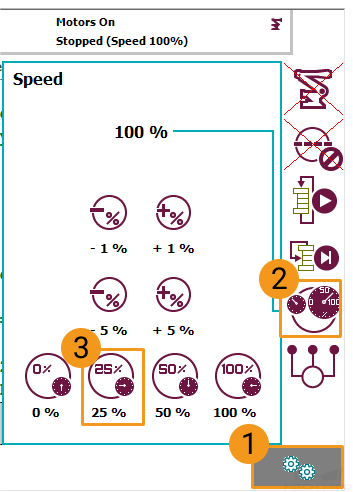
-
Press the run key on the teach pendant, as shown below.
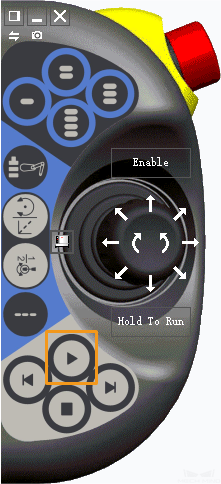
Create a Mech-Viz Project
-
Open Mech-Viz, press Ctrl+N on the keyboard to create a new project. Select the robot model corresponding to your real robot brand and model on the interface as shown below.
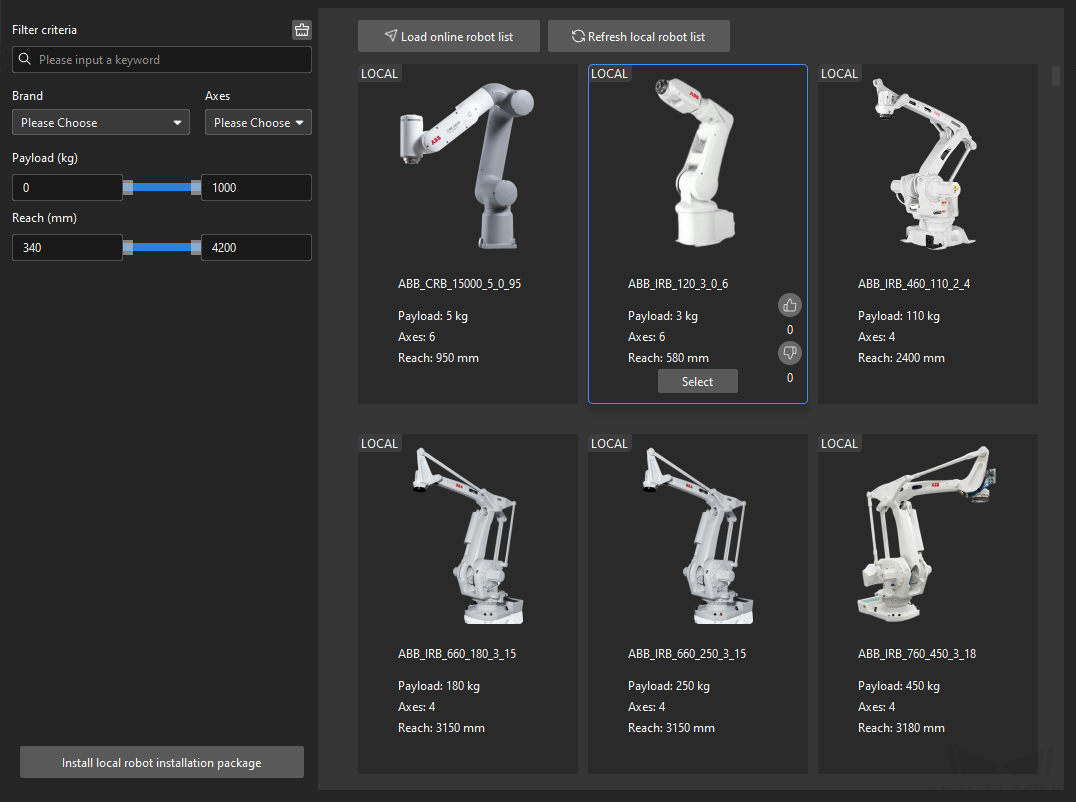
-
Press Ctrl+S and create or select a folder to save the project.
-
Right-click the project name in the left panel in Mech-Viz and select Autoload Project.
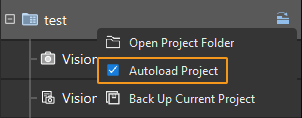
Connect to the Robot
-
Click Master-Control Robot on the toolbar of Mech-Viz.
-
Input the IP address of the real robot in Robot IP address (the IP address in the picture is only an example). Click Connect the robot.
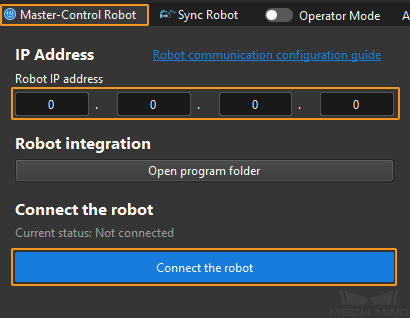
If Mech-Viz successfully connects the real robot, the current status will change to Connected. Meanwhile, the icon in the toolbar will turn from blue to green.
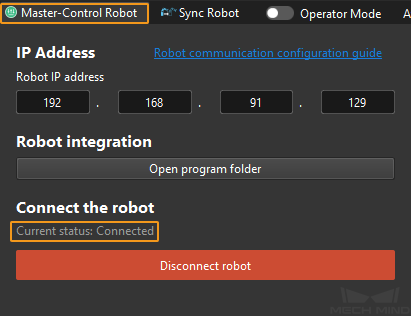
If the connection fails, please double-check the robot IP address.
Move the Robot
-
In the toolbar of Mech-Viz, change the “Vel.” (velocity) and “Acc.” (acceleration) parameters to 5%.

-
Click Sync Robot in the toolbar, and you can synchronize the poses of the simulated robot in the 3D simulation space with the poses of the real robot. Then click Sync Robot again to unselect it.

-
In the Robot tab, slightly adjust the value of “J1”, for example, from 0˚ to 3˚. This operation will move the simulated robot.
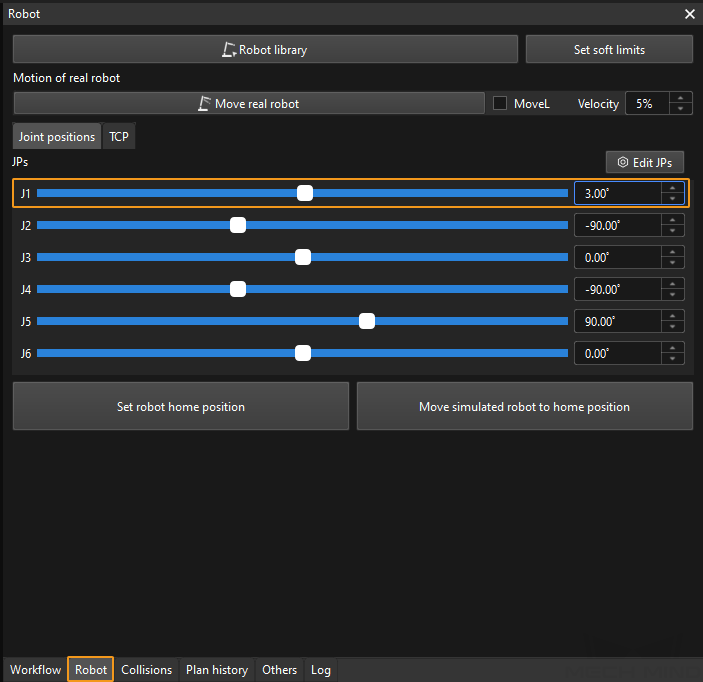
-
Click Move real robot and check if the real robot has moved. If the real robot has reached the JPs set for the simulated robot, the master-control communication is working.
When moving the robot, please ensure the safety of personnel. In the case of an emergency, press the emergency stop button on the teach pendant! 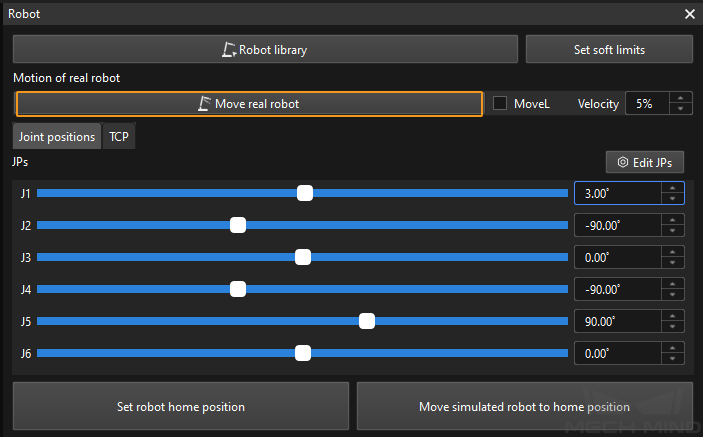
Troubleshooting
If the program has been loaded but the robot cannot be connected successfully, please check whether the following requirements have been met.
-
IPC side:
-
The firewall is turned off.
-
The IPC can ping the robot IP address with in the command prompt.
-
Antivirus software does not affect the connection.
-
Two network ports of the IPC belong to different subnets.
-
If the IPC is connected by using a router, other network cables do not affect the connection.
-
-
Robot side:
-
The Ethernet cable is connected to the WAN port of the controller properly.
-
The correct robot IP address is set. Please ensure that the IP address of the WAN port, instead of other ports, is modified.
-
The program is run on the robot side.
-
